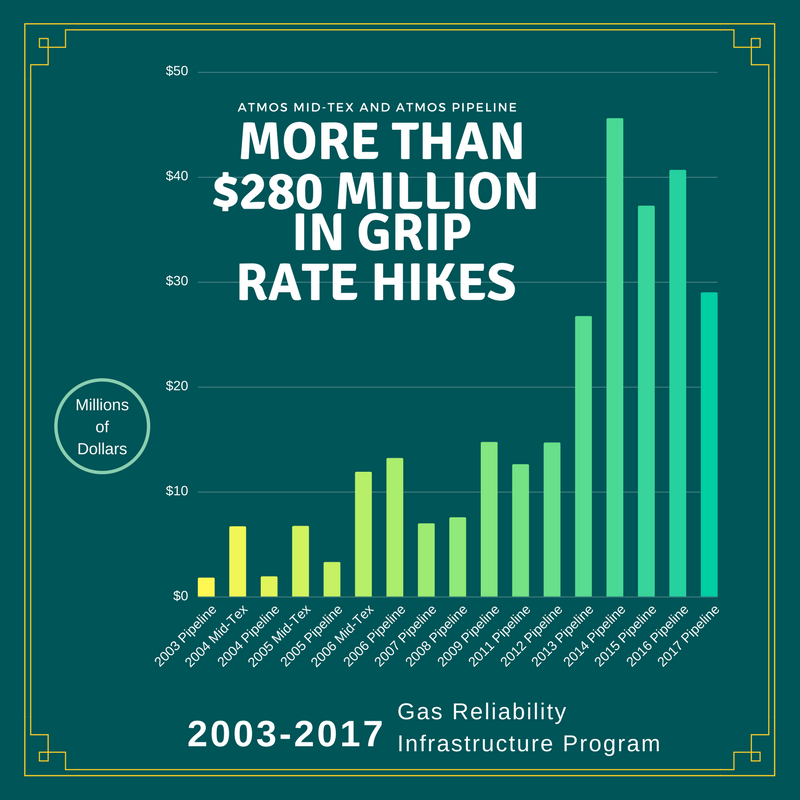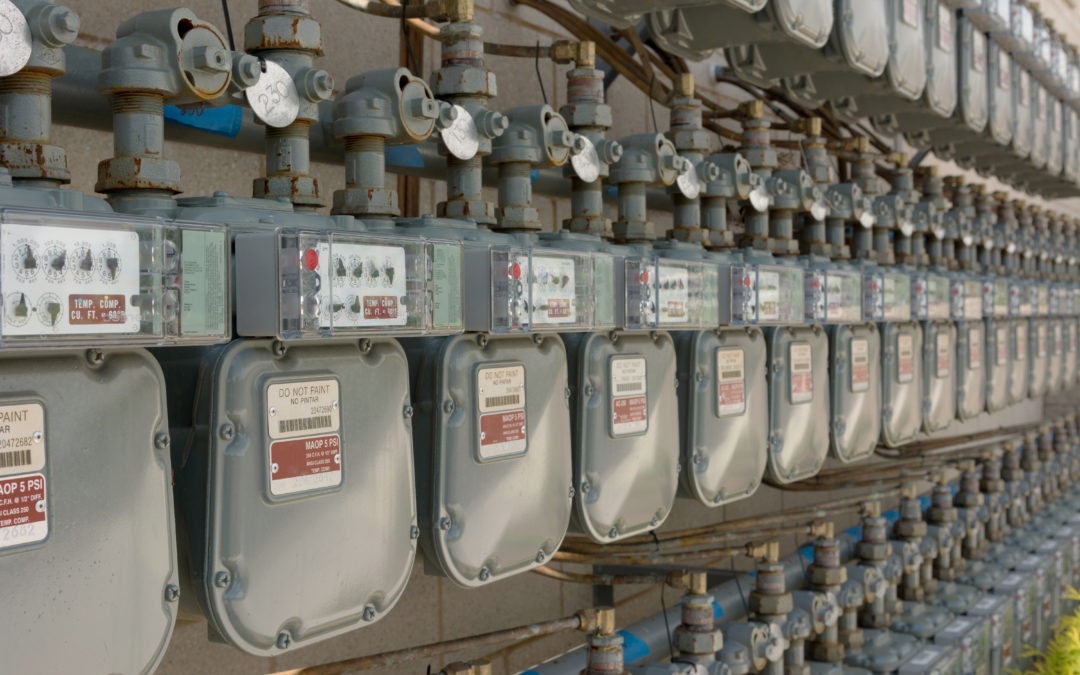Controversial “alternative” rate-making schemes allow monopoly utilities to hike rates without substantive regulatory review.
________________________________________________
Natural gas commodity prices are less than half what they were in 2004 and yet average home gas bills have gone up.
How can this be? Why aren’t Texans enjoying real savings in their gas utility bills?
The answer relates to pipeline and distribution charges, which are little known components of home utility bills.

Because gas utilities are monopolies (think Atmos Energy in the DFW area or CenterPoint Energy in Houston), the rates they charge to deliver gas to Texas homes and businesses are set by state regulators. Every home gas utility bill includes these regulated pipeline and distribution charges along with market-based charges reflecting natural gas commodity costs.
It’s the regular increases in these regulated delivery charges that have consumed much of the savings that Texans should have expected in their home gas bills. To make matters worse, controversial “alternative” rate-making schemes allow monopoly utilities to frequently hike rates without substantive regulatory review.
Looking at the numbers.
According to the United States Energy Information Administration, the average annual commodity (Henry Hub) price for natural gas declined by 57.2 percent from 2004 through 2016. At the same time, the average overall natural gas prices paid by Texas residential consumers (delivery char
ges, plus those commodity costs) increased by 13.1 percent — from an average of $10.37 (per thousand cubic feet) to $11.73.
Texans served by monopoly gas utilities during that 12-year period have endured a constant uptick in distribution and pipeline charges.
The example of Atmos Energy, which is one of the state’s largest gas utilities, illustrates this point. Atmos serves millions of Texas customers though its three utility divisions in the state: Atmos Pipeline, Atmos Mid Tex and Atmos West Texas. According to our review of regulatory filings, Atmos Pipeline Texas increased its rates 21 times since 2004, Atmos Mid Tex increased its rates 16 times and Atmos West Texas increased its rates 12 times.
Because of alternative rate-making rules such as those included in the “Gas Reliability Infrastructure Program” (adopted in 2003 by the Texas Legislature) most of these increases have been implemented without substantive regulatory review.
But Atmos customers are by no means alone. The Gas Reliability Infrastructure Program and other alternative rate-making schemes also have contributed to millions of dollars in rate hikes by other major Texas utilities over the last decade.


